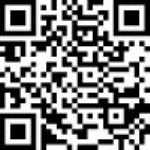期刊目錄列表 - 56卷(2011) - 【教育科學研究期刊】56(1) 三月刊
 Directory
Directory
透過PISA與TIMSS 評比研究檢視西方與亞洲學生數學的相對強項
作者:張立民(澳洲墨爾本大學評估研究中心副教授)
卷期:56卷第1期
日期:2011年3月
頁碼:67-89
DOI:10.3966/2073753X2011035601003
摘要:
Wu(2009)的研究曾將2003年「國際學生能力評量計畫」(Programme for International Student Assessment, PISA)的 數學表現,與「國際數學與科學教育成就趨勢調查」(Trends in International Mathematics and Science Study, TIMSS)八年 級學生的數學表現做一比較,結果發現,西方國家在PISA 的表現大致上比在TIMSS的表現為佳。本研究則將TIMSS公開的題目分為兩組,一組與PISA的架構相符,另一組則不相符。其中,TIMSS評比有很多幾何與代數的題目是屬於「純粹的數學」題(即未以真實生活 情境作為背景的數學題),而這些題目並未出現在PISA評比之中。本研究檢視六個國家在這兩組題目表現上的差異,藉此反映出西方與亞洲國家的相對強項與弱點,接著再將這些強項與弱點連結到PISA與TIMSS評比的內容上。有證據顯示,西方與亞洲國家在PISA 與TIMSS的 差異表現可歸因於兩評比題目種類的不同。
關鍵詞:國際研究、數學、國際學生能力評量計畫、國際數學與科學教育成就趨勢調查
 《詳全文》
《詳全文》

Journal directory listing - Volume 56 (2011) - Journal of Research in Education Sciences【56(1)】March
 Directory
Directory
Using PISA and TIMSS Mathematics Assessments to Identify the Relative Strengths of Students in Western and Asian Countries
Author: Margaret Wu (Assessment Research Centre, University of Melbourne)
Vol.&No.:Vol. 56, No. 1
Date:March 2011
Pages:67-89
DOI:10.3966/2073753X2011035601003
Abstract:
A study was carried out that compared Programme for International Student Assessment (PISA) 2003 Mathematics results with Trends in International Mathematics and Science Study (TIMSS) 2003 Grade 8 Mathematics results (Wu, 2009). It was found that Western countries generally performed better in PISA than in TIMSS, and Eastern European and Asian countries generally performed better in TIMSS than in PISA. In this paper, TIMSS released items are divided into two sets: one that fits the PISA framework and one that does not. In particular, many geometry and algebra items in TIMSS are “inner mathematics” (mathematics without a real-life context), and such items do not appear in the PISA test. Differential performances of six countries on each set of items are examined. In this way, the relative strengths and weaknesses of Western and Asian countries are identified. These strengths and weaknesses are then linked back to the contents of the PISA and TIMSS tests. There is strong evidence that differential performance between Western and Asian countries in PISA and TIMSS can be directly attributed to the types of items in the respective tests.
Keywords:international study, Mathematics, PISA, TIMSS